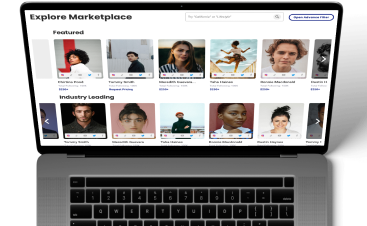Content marketing is a form of advertising that has grown to a mainstream level over the past few years. This new-age digital marketing is quite lucrative, and the return of investment (ROI) it brings can be bigger than that of traditional marketing strategies. Calculating ROI from content marketing can be more difficult, as the metrics have to be taken from social media awareness and then translated into actual profit increase.
Like any other form of marketing, content marketing has to promote and adhere to the overall goals of the company. Most of the time, the intent of content marketing is to do one of the following: increase brand awareness online, increase sales, or both of these objectives combined. Based on the goal set by the company as listed previously, the ROI has to be calculated accordingly. In raising brand awareness, it’s evident that ROI has not only a monetary or economical dimension but also a more qualitative one, such as likes, shares, story posts, re-tweets, tags, etc.
These are the so-called “vanity metrics,” which are used to measure brand awareness, because they show the audience’s engagement and appreciation towards a particular brand. Raising brand awareness can be perceived as an intermediary goal before raising sales in situations when the brand is new to the market and wants to establish its position in the minds of potential customers or in situations when the brand wants to reposition itself or create a fresh identity.

When discussing the monetary dimension of ROI, the brand’s final goal is focused on raising sales. Some marketers have difficulties in connecting this type of ROI with content marketing, so the first step towards achieving measurable results is creating the marketing campaign in measurable terms. The measurable variables which come into play when calculating ROI are costs, utilization, and performance.
Costs
Cost refers to the necessary pay for creating online content, which includes employee salary, distribution fees on various platforms, and copyright fees for software. Content marketing generally equates smaller costs than other forms of marketing used to convey the brand’s message. Social media channels are less expensive for any marketing campaign than traditional channels, including TV or magazines. The content can also easily be modified with the help of rapid feedback from customers, so the campaign can be changed accordingly, minimizing the risks and losses.
Sometimes, in the case of influencer marketing the overhead is only a single cost which is the fee of the contract between the brand and the influencer. In many cases, brands give the influencer a set amount of money and access to the product / service and they are told to create the content themselves for distribution on their channel. If you are looking for influencers for a new content marketing campaign, apply here to be a part of Glewee’s exclusive influencer marketing platform.
Utilization
The second factor which affects ROI is utilization, which refers to how much of the distributed content is used. If only a small percent of that content is used, then it can be assumed that that content isn’t very profitable especially if the costs themselves are a bit high. However, if the unused content is cheap, then its utilization becomes less important than its cost factor. It should be a campaign goal to utilize as much of the content as possible, but any marketer will tell you that there’s always some left over content that never sees the light of day.
When planning out a content marketing campaign, a brand / agency first looks at the ‘wants’ and ‘prospective goals’ of the campaign overall. When seeing the clear end goal, the creative team is tasked with creating a content road map. On this road map, various pieces of content are created and scheduled for posting and publication. In order to maximize utilization of content in order to amass the greatest possible ROI, the team must not over create which leads to over spending which, as we know, can lead to minimized ROI.
Performance
When it comes to performance or conversion rates, good content on a company’s blog should include the possibility of online purchases, online contact forms, newsletter sign-ups, and downloads. These options allow visitors to make the step from simply using your website as a research tool towards becoming loyal paying customers.
To measure performance and ROI, you should analyze the exposure to your website. Google Analytics is an excellent tool for this, as it allows you to see the cost of each keyword and estimate how much you would have to pay Google Adwords in order to attract the desired number of visitors. This tool can also give you a good idea regarding the cost of your leads and sales. There are various different CRM (Customer Relation Management) tools out there that businesses can utilize in order to track previous, current, and new customers and their interaction with the company.
You should also be tracking the number of social shares, such as clicks, comments, and shares. These analytical points can all be measured in various forms and can be compiled together to evaluate, equate, and understand the performance of a content marketing campaign.
Calculating the Return
In order to fully comprehend the response of the content marketing, we must revisit the beginning stages of the project by going over what the goal is. To keep things simple for the use of the example; imagine we wanted increased revenue. If we spent $1,000 on content marketing and directly from that we saw $1,500 in sales we can then conclude a 1.5x ROI.
But, if we are looking for impressions, engagement, followers, or virtual drives to the website then we must value these points out individually. 1,000 followers to one company will be valued differently than 1,000 new followers to the next company.
If you have spent $5,000 on content marketing intended to grow follower count and the campaign generated 1,000 new followers then we can conclude that it costs $5 to acquire each new follower using this method. If in the past it cost $6 to get a new influencer, you are now cutting costs and creating a new effective content marketing strategy. But, if it usually costs $1 to acquire a new follower in a campaign and this campaign came back with $5 per follower, you know you lost 80% ROI. It is all about matching the quantitative variables of the objective up with the end result of the content marketing campaign.
Return does not just come in the form of quantitative value when it comes to content marketing. Below is a list of various goals that companies set when beginning a new content marketing campaign.

Content marketing ROI isn’t something that a business can afford to neglect in today’s business world. The technological advancement has brought a shift in how content marketing works and how it’s evaluated towards a more analytical and pragmatic approach, also bringing more potential profit to this type of marketing. Understanding the importance of content marketing and how to correctly calculate it is key when looking to deploy new digital marketing strategies, campaigns, and projects.





